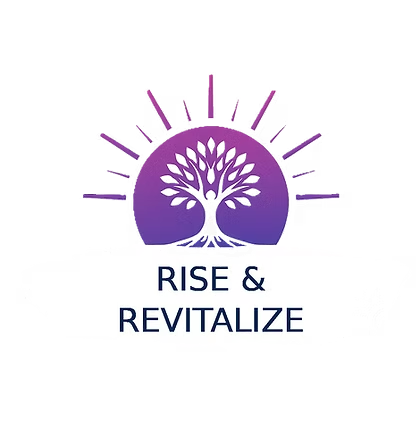
Resource Description
![]() Date: October 27, 2025
Date: October 27, 2025
![]() Author: Cambria Rose Walsh
Author: Cambria Rose Walsh
![]() Time: 5 minute read
Time: 5 minute read
On paper, the work is about helping people. But for those who spend their days in trauma-exposed environments — whether that’s behavioral health, child welfare, healthcare, victim services, law, or education — the reality can feel very different. The long hours. The impossible demands. The weight of stories that don’t leave your mind at the end of the day. Over time, the very work that once felt meaningful can start to feel unbearable. 
“It’s not about bubble baths or time off — it’s about building the right skills, strategies, and supports to protect your well-being while you continue to engage in meaningful and important work.”
— Cambria Rose Walsh, LCSW, Founder, Rise & Revitalize
For more than 15 years, I have been on the front lines of supporting those who support others. As a long-time member of the National Child Traumatic Stress Network (NCTSN), I have served as:
- Project Director of a Cat II Center focused on Trauma-Informed Child Welfare
- Consultant on a Cat II Center addressing Secondary Traumatic Stress
- Consultant to the National Center on Implementation of evidence-based practice and system change efforts
In my work across North America, I kept hearing the same things. Leaders indicated they wanted to support their staff but didn’t know where to begin — and without a clear structure, even the best intentions often fizzled out. Individuals, meanwhile, felt they had to shoulder the burden alone, unsure where to turn for help and sometimes questioning if they could continue in the work at all.
The challenges were not abstract. Burnout, secondary trauma, and moral distress are distinct occupational hazards — each with its own drivers and requiring specific strategies. But in practice, they rarely show up alone. They often amplify one another, creating a cycle of depletion that feels overwhelming. Left unaddressed, the consequences were all too familiar: morale crumbling, teams fracturing, productivity dropping, and turnover or leaves of absence rising.
I designed Rise & Revitalize in direct response to these challenges. The program starts from a simple but often-missed truth: burnout, secondary trauma, and moral distress are not personal failings. They are predictable outcomes of trauma-exposed work.
Each requires different strategies, yet they are deeply interconnected and often intensify one another. Rise & Revitalize was built with this complexity in mind. It provides tools that address the unique aspects of each hazard, while also teaching the shared skills and supports that protect professionals across all three.
By combining individual strategies with organizational responsibility, the program offers a comprehensive approach to sustaining those who dedicate their lives to helping others.
I created Rise & Revitalize as both a lifeline and a framework. The program is designed to give professionals the skills, strategies, and the support they need to sustain themselves — while also helping organizations step up and play their part in creating healthier, more sustainable workplaces.
- For individuals, it provides practical, evidence-informed tools that fit into already-full schedules: short lessons, reflective exercises, and strategies to strengthen well-being while continuing meaningful work.
- For organizations, it offers a structured, ready-to-implement program that leaders can bring to their staff — to provide concrete tools and support and helping them to show their teams that they don’t have to carry the weight alone.
The course unfolds in three core sections.
- Awareness: Naming the Challenges - Learn to distinguish between burnout, moral distress, and secondary trauma, and see how they interact and amplify one another.
- Building Skills: Responding with Intention - Explore targeted strategies for each hazard, while also strengthening the shared skills that can lessen the impacts across them all.
- Connection: Sustaining Support - Identify and nurture support systems both inside and outside the workplace and understand how to advocate for organizational change so these challenges aren’t shouldered alone.
|
How it works:
|
Course Investment:
|
Rise & Revitalize is more than a training program — it’s a shift in how we view the people doing this work and the support they need to sustain it. By bridging the gap between individual awareness and organizational responsibility, and by acknowledging the broader societal role in supporting this work, it addresses the full complexity of trauma-exposed environments.
At its heart is a recognition that burnout, secondary trauma, and moral distress are distinct hazards that demand attention — but also a belief that when we address their overlaps, we unlock powerful opportunities for staying well in doing the incredibly meaningful work.
The result is not just healthier professionals, but stronger organizations and communities. And for those not yet ready to take the full step, I also offer a free monthly newsletter with practical tools, tips, and reflection prompts — a way to begin replenishing while deciding what comes next. Sign up here: Rise & Revitalize Newsletter.
Reach out to me with questions or for more information: info@cambriawalshconsulting.com.
